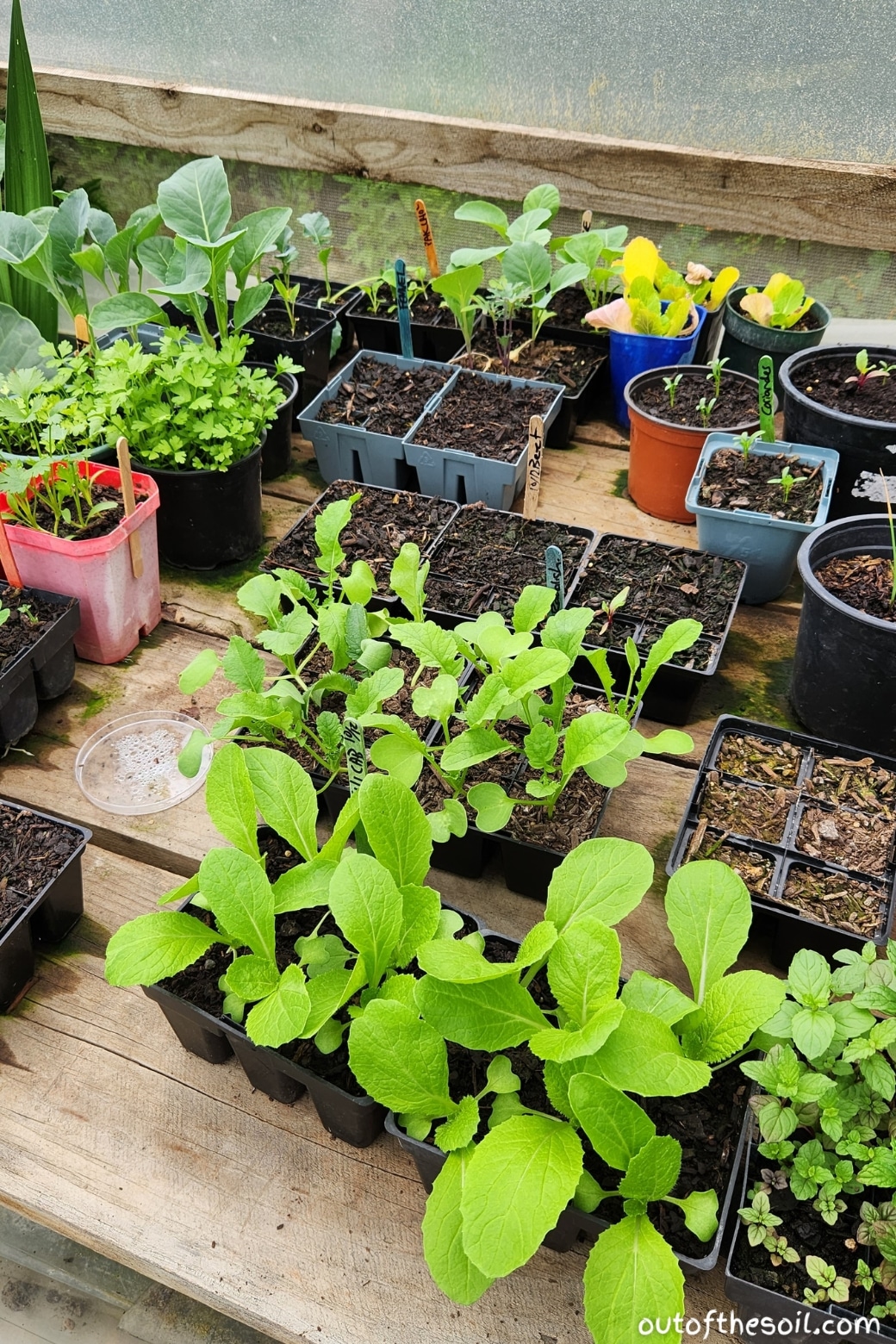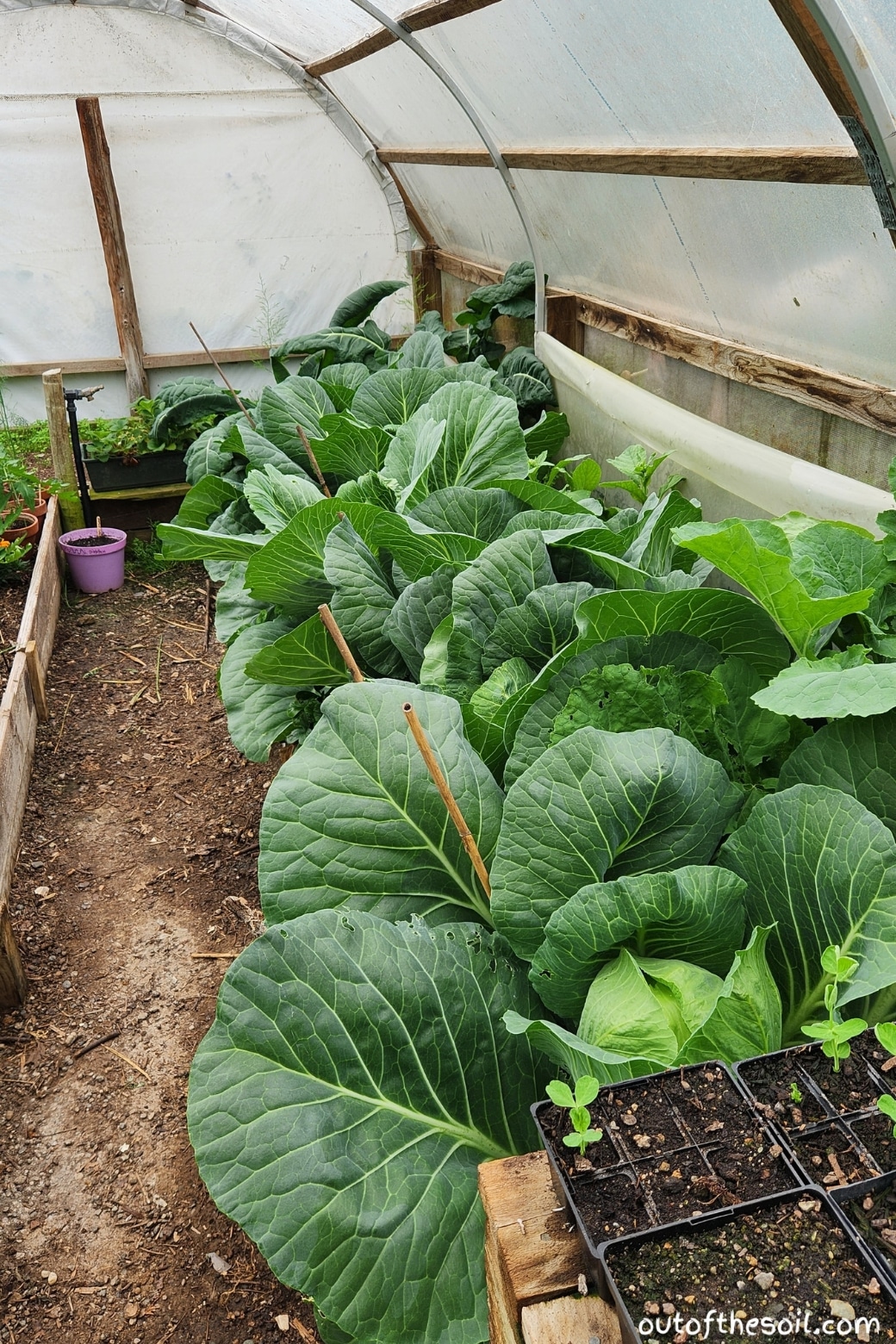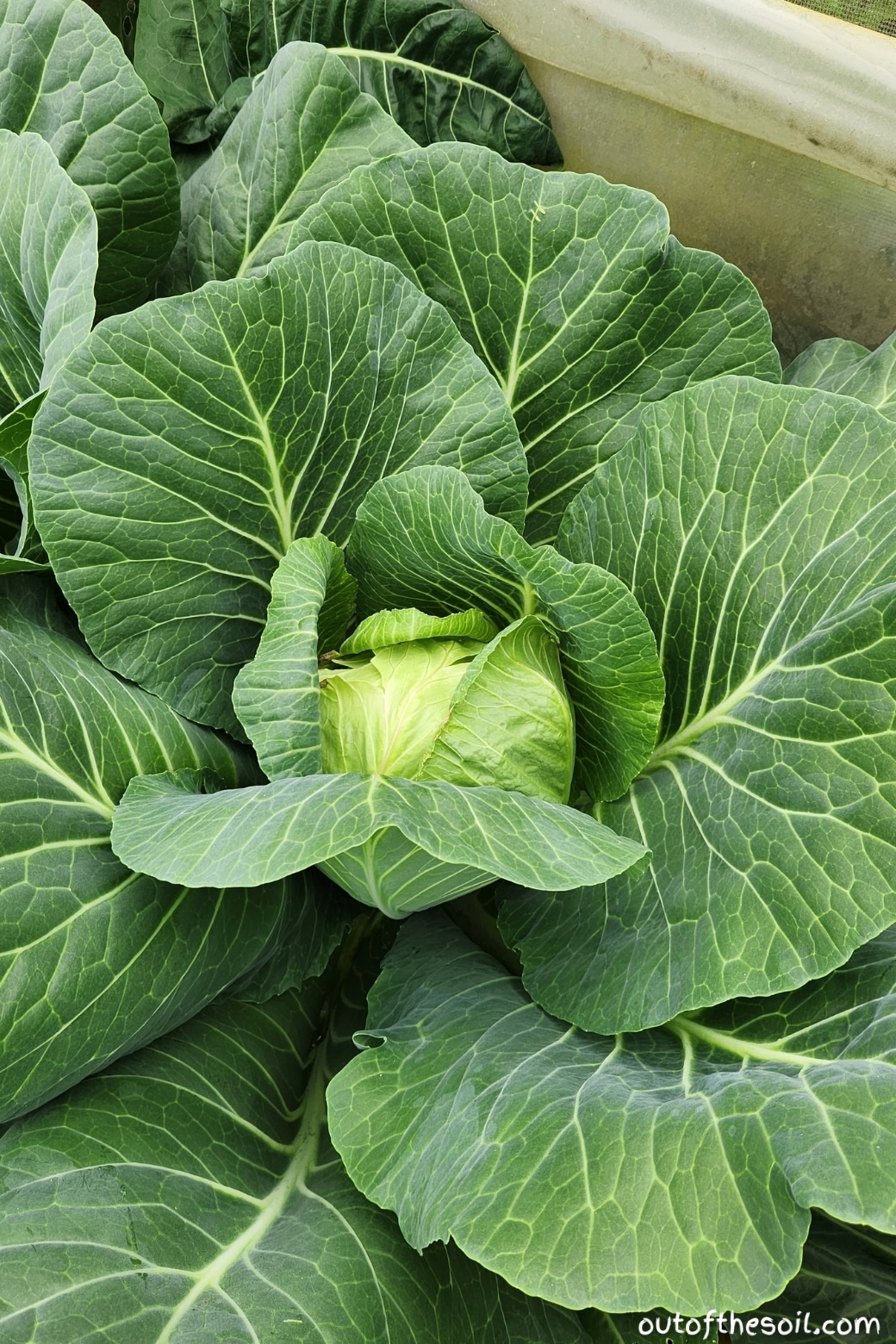Can you grow cabbages in a greenhouse or glasshouse?
YES – at the right time!
In fact, growing cabbage in a greenhouse is a good way to get an early start on the growing season.
This is how I successfully grow huge tightly formed cabbages in my tunnel house in the spring and early summer.
Glasshouse Cabbages

I start growing my cabbages from seed at the very start of spring to be transplanted into my greenhouse garden beds.
It’s important to use a good seed-raising soil mix. Simply sow the seed a little below the soil surface and water it in.
I like using 6-cell growing containers but larger pots are fine as well.

Of course, the soil preparation in your glasshouse should have already been done.
I mulch heavily and add compost at the end of the last growing season and make sure to keep the soil moist through winter. This way the soil is rich, healthy, and full of nutrients.
Once the cabbage seedling is an inch high or so, it’s time to put it in the glasshouse soil. This is best done in the evening or on a cool day.
Pop it out and into the garden, leaving a space of 3 feet/1 meter
I usually put a bit of my vegetable fertilizer at the bottom of the hole, put some regular soil on top, and then the seedling on top of that. This will give the plant a boost when the roots find it after a few weeks.
Once in the soil, water it in and continue to water it as needed for the soil to remain moist.

Once the cabbage is in the glasshouse garden bed, it will take between 8 to 10 weeks until ready for harvest.
One of the main tasks I had in caring for these cabbages while they grew, other than watering, was protecting them from slugs!
When the cabbages were newly planted and still quite small, I would go out each night with a torch and pick off slugs. It’s important that they not damage the young plant.
Once the cabbage head has well and truly started to form, this becomes less important as slugs will usually only target the unneeded outer leaves.
Unless you have huge numbers of slugs, which I don’t, they won’t damage the cabbage head itself once the head has formed.
We had these 6 huge cabbages that all came ready at the same time. We gave a couple of them to neighbors, used one for coleslaw, and turned the rest into sauerkraut and Kim Chi.
Make sure you have other cabbage seedlings ready to successively plant out well before your first harvest is due, but don’t reuse the same soil unless prepared again with fresh compost.
Tips For Growing Glasshouse Cabbage
As long as your soil is good, the time of the year is right, and you keep the growing cabbage well-watered, you can’t go too wrong.
However, here are a few tips for growing the best cabbages in a glasshouse:
- Don’t plant out before the last frost unless very well protected
- Leave enough space for cabbage to grow out (3 x 3 feet or 1 x 1 m)
- Pick slugs off the plant, especially when young
- Don’t let the soil dry out but maintain moisture with daily watering
- Allow as much airflow around the plants to prevent other pests or problems
And lastly, once the temperatures really get hot, it’s best not to grow cabbages in a greenhouse. They will dry out quickly, wilt, and have other issues.
While glasshouses are good at preventing cabbage butterflies from laying eggs on the plants, they are really best grown under nets outdoors from mid to late summer.
Let us know more tips on how to grow cabbage in a glasshouse in the comment section below!

